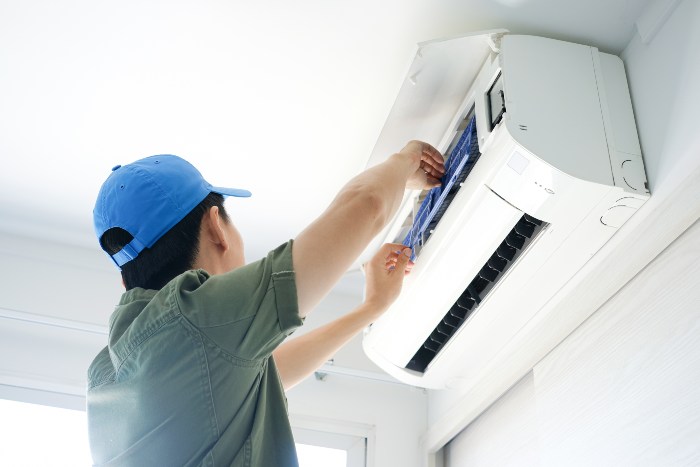Air Conditioning Installation in Santa Ana CA is a much more complex process than many homeowners realize. It involves a variety of complicated equipment, fluids, and electrical connections.
It also includes assessing your home’s insulation, ductwork, and more. Doing an assessment early limits surprise costs and improves your system’s performance. It can also help ensure you get the right-sized unit for your home.
Installation Type
There are several types of air conditioning units that can be installed in homes or small businesses. Each type is designed to eliminate heat efficiently and quietly. They all differ in price, power output and energy efficiency.
One popular type is called a split system because it is composed of two units: an indoor unit and a compressor/condenser unit outside. Copper tubing links the two units, allowing the air to be distributed throughout the house. Many models are also capable of heating the home in addition to cooling it.
If you choose this type of AC installation, look for a unit with a high SEER rating. A higher SEER rating translates into greater energy savings over time. Choose a model that does not use refrigerants such as chlorofluorocarbons and hydrochlorofluorocarbons (HCFC). These chemicals deplete protective ozone and are a threat to the environment. Also, look for a unit that has a built-in programmable thermostat and remote control.
Installation Location
Traditionally, air conditioning units are installed on concrete slabs because they need to be on a hard and sturdy surface. However, cement and stone are capable of radiating heat from the sun, which increases the temperature around your air conditioner and makes it work harder to cool your home down. This will increase your energy bills over time. The ideal location for your air conditioner would be near grass or mulch, which don’t radiate heat and will reduce your cooling bills.
You also want to make sure that your outdoor unit is away from cement, stones and other hard surfaces, as these can cause excess vibration that can damage the equipment over time. It should also be clear of shrubs and bushes that could block air flow or smother the equipment.
It should be easy to access for servicing and repair, and it should be positioned at a height that allows the refrigerant lines to drop freely, without having to fight gravity.
Installing the Condenser
The air conditioner must be installed in a location that is easy for you or your technician to reach when it comes time to perform maintenance. This can save money and time by reducing the cost of repairs or replacement parts.
The condenser should be shielded from direct sunlight, which reduces cooling and shortens the life span of the unit. Similarly, it should be protected from heavy rain and snowfall, which can puddle on the ground and introduce water containing oxygen that promotes corrosion and accelerates component damage.
Ideally, it should also be situated away from areas that you or your children frequently play in, to prevent injury. It’s also recommended to build a storage space for the condenser on your property, so you can easily access it when necessary. Be sure to choose a storage space that is large enough for the AC unit, and to keep it away from passageways or any spaces where children and pets play regularly.
Installing the Evaporator
The evaporator coil inside your air handler extracts heat from your home’s air, cooling it before redistribution. Over time, evaporator coils wear out and require replacement to ensure your HVAC system functions optimally.
A licensed technician will help you choose the right AC unit for your home, including its size and SEER rating (seasonal energy efficiency ratio). A high-SEER model reduces your electricity bill and is environmentally friendly.
Prior to the day of installation, prepare your Highland Park home by clearing away children, pets and valuables from the area where your evaporator will be installed. This will ensure your family’s safety and the team’s comfort. Then, have a trusted HVAC pro assess your home’s insulation, ductwork and more to determine the best system for you. This upfront assessment costs $420 on average but limits surprise costs later.
